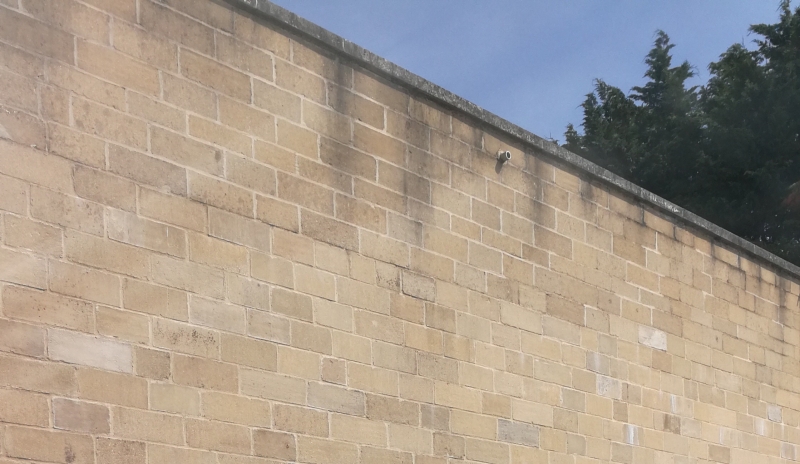When is a wall not a wall?
8 July 2019

In this article, Alexandra Sollohub and Mike Ellis review a recent decision of the First-tier Tribunal (Property Chamber)("the FTT") in which the tribunal was asked to consider whether a "Legacy Chinese Gardens Act Project" created in the living room of the leaseholder constituted a wall. This was a case in which Alexandra acted for the successful applicant.
Background
The background facts are reasonably straightforward. A leaseholder in a block of flats installed a partition in the living room which had the effect of dividing the living room into two spaces of approximately equal size. The partition was constructed of plasterboard and wood (in a similar way to the way a stud wall might be constructed) and extended from the ceiling to the floor. It was trimmed with skirting boards and decorated with wallpaper. Whilst it spanned the living room, it fell slightly short, leaving a gap at one end which was precisely the same size as a door width.
The provisions of the leaseholder's lease prohibits the erection on the demised premises of an “additional wall or other thing whether temporary or otherwise”.
The landlord inspected the property and requested that the leaseholder remove the partition on the grounds that it breached the terms of the lease, as it was either a wall, or an "other thing whether temporary or otherwise".
The leaseholder objected to the request for the partition to be removed, on the basis that it was not a wall but a “Legacy Chinese Gardens Art Project”; a meaningful art project creation which she had made for cultural, sentimental and aesthetic reasons.
The landlord therefore applied to the FTT to determine whether the partition constituted a breach of covenant pursuant to section 168(4) Commonhold and Leasehold Reform Act 2002.
The leaseholder's argument
The leaseholder claimed that no nails or screws or glue had been used to fix the construction into place and it was simply wedged in between the floor and ceiling. It was not a fixture but a chattel, could not therefore be a wall, and therefore was not a breach of the lease.
She also claimed that if the landlord's interpretation of the clause were correct the lease would prohibit the installation of much smaller features, such as a small bookcase or a small wardrobe. There would be no distinction between the installation of a shower cubicle in the bathroom and the setting up of a water tray for children to play in the lounge because both would be prohibited.
The leaseholder maintained that the tribunal's decision should turn on whether her art project was a genuine artwork or a disguise to create an additional room in the flat. Art is subject to personal subjective interpretation.
The landlord's case
The landlord argued that it was immaterial whether the wall was a chattel or a fixture as the clause in the lease was sufficiently clear and adequately broad to deal with both. The clause prohibits the erection of a wall or any other thing whether temporary or otherwise.
Secondly, regardless of whether the partition was an art project or not, it was a wall. It had the characteristics of a wall. It was made in exactly the same way as internal walls are made, constructed of a stud framework and covered in plasterboard. Even if it were not a wall, the landlord claimed that it was an "other thing whether temporary or otherwise", and therefore either way the leaseholder was in breach.
Tribunal decision
At the tribunal, both parties agreed that art was open to subjective interpretations and it was irrelevant as to whether it was a genuine artwork or not.
The tribunal agreed with the landlord that the partition was a wall. The lease prohibited the erection of a wall whether temporary or otherwise. The partition could not be removed without destroying it. In particular the tribunal noted (para 49) that although no glue or screws had been used to fix the construction in place, it was nevertheless wedged into place/fixed to the building in such a way or another that it could not be moved and used elsewhere, it could not be removed without destroying it and it was clearly intended to last for as long as the respondent or her family resided at the flat. The tribunal was also satisfied it was not constructed for a temporary purpose.
The tribunal went on to consider, if it were wrong in concluding that the construction was a wall, that in applying the "ejusdem generis" principle, the art project fell into the scope of "other things".
Comment
The tribunal's decision did not turn on whether the partition was art. It did, however, consider that the partition was a fixture, regardless of the fact that it was wedged into place.
However, in case it was wrong in its decision, it performed an exercise in lease interpretation. The clause preventing "the erection of walls or any other things" was not outside the scope of the application of the ejusdem generis principle.
Although the facts of this case were, on the face of it, unusual, once the question of whether the wall was art or not had been determined to be irrelevant the question for the FTT to consider was whether the partition constituted a breach of lease. Under the terms of this lease the FFT found that it was a breach of the lease.
Leaseholders might also be interested to note that the tribunal commented in particular that the absence of nails, screws and glue did not prevent the wall from being a fixture.
To paraphrase Lord Templeton in Street v Mountford, the manufacture of a partition that is identical to a stud wall, looks like a wall and provides the function of a wall results in a wall even if the manufacturer insists that she intended to make, and has made, an art project.
So, when is a wall not a wall? The answer is not "when it is an art project".
A link to the judgment of the First-tier tribunal can be found here: Chester Close v Hampson (2019)



